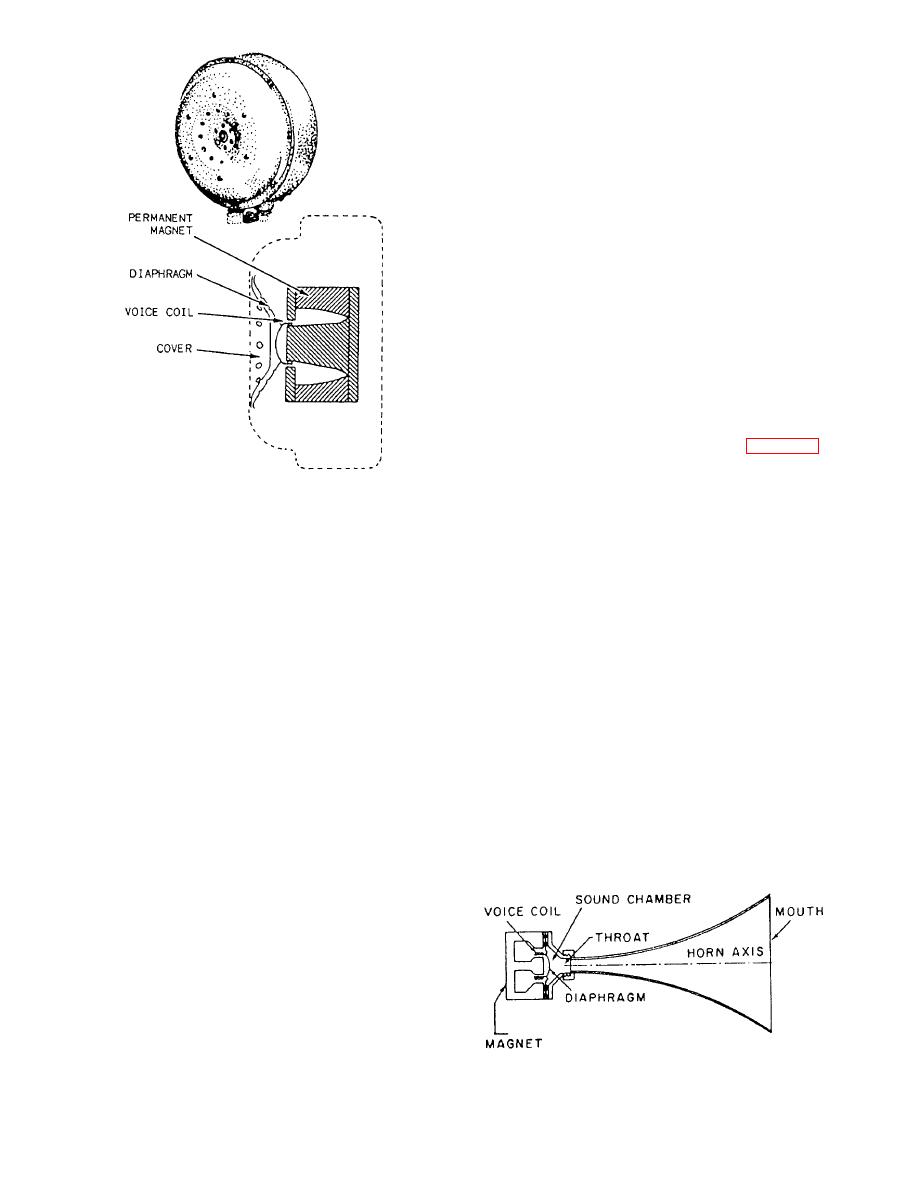 |
|||
|
Page Title:
Figure 7-5.--Direct-radiator loudspeaker. |
|
||
| ||||||||||
|
|
 diameter of the baffle. If the loudspeaker is mounted in
a wall or is completely enclosed, the baffle is called an
infinite baffle. When a cabinet is used as a baffle, it is
desirable to line the inside with a sound-absorbing
material to minimize the effect of cabinet resonances
produced by standing waves within the enclosure.
Horn Loudspeaker
The use of the direct radiator loudspeaker is limited
because of its low radiation efficiency. When it is
necessary to produce high sound intensities or to cover
large areas with sound, the radiation efficiency of the
loudspeaker must be increased to keep the size of the
amplifier within reasonable limits. Horns with
appropriate driver units provide a practical solution to
the problem. A horn maybe considered as an impedance
matching device for coupling a relatively heavy
vibrating surface at the horn throat to a relatively light
medium (the air) at the mouth of the horn. Figure 7-6 is
an illustration of a straight-horn loudspeaker.
For a horn to operate effectively, the mouth must be
sufficiently large in comparison with the longest
wavelength (lowest frequency) of sound that is to be
transmitted. Low-frequency horns often are considered
to be useful at frequencies above that for which the
mouth diameter is about one-third wavelength. The
At low frequencies, where the wavelength is large
performance of a horn loudspeaker near the
compared with the dimensions of the loudspeaker, the
low-frequency cutoff point depends to a great extent
rarefaction wave from the back of the diaphragm meets
upon the flare or shape of the horn. The function of the
the compression wave from the front of the diaphragm
horn contour is to produce a smooth and continuous
and neutralizes it because the waves are in opposite
increase in cross-sectional area in progressing from the
phase relation. Thus, low frequencies are not
small throat to the large mouth. The shape most
reproduced from this type of direct radiator.
commonly employed is the exponential horn in which
the diameter increases progressively by a fixed
At higher frequencies, where the wavelength of the
percentage for each equal-distance increment along the
sound is small compared with the dimensions of the
horn axis. For the horn to be of a practical size and shape,
loudspeaker, the sound waves from the front of the
diaphragm have time to travel an appreciable distance
away from the loudspeaker (in terms of wavelength),
and the phase of vibration of the diaphragm changes
before the interfering wave from behind can traverse the
distance around the diaphragm. Hence, a baffle is
necessary only to reproduce low frequencies from a
direct radiator. The purpose of the baffle is to delay the
meeting of the front and back waves by artificially
increasing the distance of the sound-wave path from the
front to the back of the diaphragm.
The simplest form of baffle is a flat board with a
hole in the center to accommodate the loudspeaker. This
type of baffle is effective down to a frequency the
wavelength of which is approximately four times the
|
|
Privacy Statement - Press Release - Copyright Information. - Contact Us |